Pitching Accuracy
Refining and/or developing Pitching accuracy during the initial days of spring training are only superseded by stretching and endurance building. Hopefully your athletes are too young to already be out of shape, or have just finished participating in a winter sport, so we’ll skip the endurance training and only mention stretching is an important cog in the overall body’s machinery.
Pitching Accuracy - Laser Focus
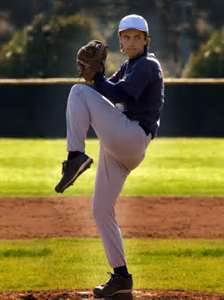
Let’s learn a couple of early season drills, which I might mention are not restricted to only early season, but can be utilized any time of the year to develop or refine a pitcher’s control.
Early in the season a pitcher should never throw any pitches other than a fastball or changeup when performing these drills.
Three Cone Drill:
Equipment required for this drill is;
(1.) 4 Traffic cones … you can modify the drill to use any amount of cones you desire, but I use 3.
(2.) Pitching rubber;
(3.) Throw down rubber home plate or an equivalent substitute;
(4.) Baseball.
Set-Up:
(1.) Position the pitching rubber at an established anchor point;
(2.) Take 1 cone and position it at the regulation pitching distance for the age group. Regulation is 60’ 6” but little leagues adjust this distance from 42’ up, adjusting for age and arm strength.
(3.) Position the remaining cones at equal distances between the rubber and plate. I.E.
(a) 20’ … 40’ … 60’
Pitching Accuracy - Rubber Plate

(4.) Begin by positioning the plate and your catcher, at the first cone distance. The pitcher must throw Ten (10) strikes in a row;
(5.) Upon completing 10 in a row, the catcher moves back to the next cone, where the drill is repeated, requiring 10 strikes in a row be thrown;
(6.) Should the pitcher throw a ball, the count reverts back to zero and he must begin all over.
(7.) Completing 10 strikes in a row, the catcher moves back to the last cone, which is regulation distance.
Intent:
This drill is designed to accomplish a couple of different skills.
(1.) The requirement of throwing 10 strikes in a row helps the pitcher develop laser like focus on the task. This focus training requires the mind, vision and body mechanics to act in unison, which requires intense focus, which I might add requires practice. Without the 10 in a row rule, or go back to zero, the pressure to maintain perfection is not there, thus reducing the need to narrow the focus.
(2.) The increasing distance in increments breaks the task down into bite sized pieces, which are easier to accomplish.
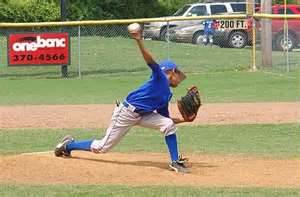
I have a personal story which may help explain the “Bite Sized” pieces theory. As a young man I tried my hand at becoming an Iron Worker as a profession and it wasn’t until then I knew I was afraid of heights. An old timer, probably because he saw the terror in my face, came over and put his arm around my shoulder and explained something I’d never forget.
He said if you come onto a job site that’s in progress and they send you to the twentieth floor, you’ll experience the natural fear of starting so high in the air. However, if you are on the job from the very beginning, you show up for work and go to the hundredth floor with no fear, because that’s where you left off yesterday.
It’s the same mental attitude you experience when developing pitching accuracy. Instead of trying to throw strikes at 60’ 6” from the beginning, you have successfully worked your way to that distance in increments and 60’ 6” was where you left off yesterday.
Clickbank Products
Another Accuracy Drill:
Required equipment:
(1.) Pitching Rubber & Rubber throw down Home Plate;
(2.) Baseball
(3.) Pitcher & Catcher
Set-Up:
(1.) Position pitching rubber and a cone at regulation distance apart;
(2.) Position the throw down home plate half way between the rubber and regulation plate distance; ( 30’ 3” )
(3.) The Catcher, in FULL Gear positions himself at the mid-way point.
Pitching Accuracy - Full Gear
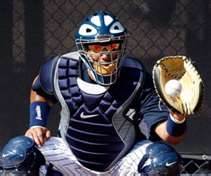
Execution:
(1.) The pitcher must throw pitches to the catcher which are strikes;
(2.) The catch here is the pitch must not only be a strike, but must be so accurate the catcher barely has to move the mitt to catch it.
(3.) The pitcher must throw 3 called strikes, called by the catcher, before he throws 6 balls, which constitutes a walk.
(4.) All runners, those on base and those who score, before the pitcher strikes out the side, are tallied. These results are used as a competition between the pitching staff as to who can allow the fewest runners/runs.
Pitching Accuracy-Frame
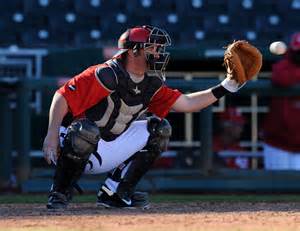
Intent:
The intent of this drill are multi-fold.
(1.) The pitcher’s focus and control must be razor sharp in order to throw such accurate strikes.
(2.) Why force such accuracy? If the pitcher can become that accurate on a consistent basis, he can also be that accurate intentionally off the plate.
(3.) This drill is not only for the pitcher’s benefit, but is also a Catchers’ drill. By trying to help his pitcher get a called strike and barely moving the mitt to receive the ball, the catcher is learning to Frame pitches. The most difficult part of framing pitches is learning the art of illusion or deceit if you prefer. The catcher by minimizing any visual movements of the catcher mitt, presents the illusion to the umpire the ball did catch the black of the plate, not that it was manipulated to appear it did.
Before anyone gets their panties in a bundle that I’m teaching cheating … I am NOT! Framing pitches, just like fooling a hitter with a curve ball, is a legal part of the game and not only totally accepted, but taught to major league catchers.
Pitching Accuracy-Focus
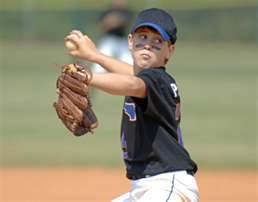
The drill is also intended to build trust between the pitcher and catcher in many small, but important ways. You must consider, you wouldn’t walk up to stranger and give him your wallet and ask him to meet you back at the exact same spot in week for you to pick it back up. But you would do that, because of years of experiences and a built up trust, to your best friend.
(a.) The drill achieves camaraderie, the catcher will say “ ahhhh, close enough … strike.” Builds a subconscious relationship that the catcher will do whatever possible to help the pitcher reach a goal.
(b.) The catcher has a responsibility to notice everything about his pitcher. If he detects the pitcher is trying to aim the ball instead of throwing, he must bring it to the pitcher’s attention. If the pitcher was unaware he’d started aiming, it tells him he can trust the catcher to notice flaws. If he was aware he was aiming the ball, he knows he can’t fool the catcher.
These types of little things turns a pitcher/catcher into a Pitching Battery.
*** Just for the record, a sure sign a pitcher has begun aiming the ball is a definite and pronounced reduction in velocity. ***
Pitching Accuracy to Baseball Pitcher

New! Comments
Have your say about what you just read! Leave me a comment in the box below.